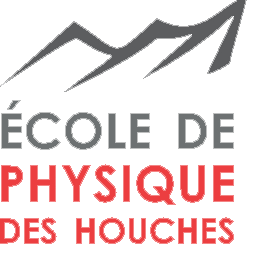Speaker
Description
The ${}^{171}$Yb${}^+$ ion employed in our single-ion optical clocks features two transitions used for the realization of frequency standards, the ${}^2$S${}_{1/2}$ to ${}^2$D${}_{3/2}$ electric quadrupole (E2) $[1]$ and the ${}^2$S${}_{1/2}$ to ${}^2$F${}_{7/2}$ electric octupole (E3) $[2]$ transition. The E2 transition frequency shows a significantly higher sensitivity to frequency shifts induced by perturbations from external fields. With quantitative knowledge about the field sensitivity of the E2 relative to the E3 transition frequency, shifts of the E3 transition frequency can be corrected more accurately by analyzing changes in the E2 transition frequency than by measuring the frequency shift on the E3 transition directly. Applying this method to perturbations from electric field gradients, we measured the quadrupole moments of the ${}^2$D${}_{3/2}$ and ${}^2$F${}_{7/2}$ states and determined their ratio with a tenfold improvement compared to previous measurements $[3,4]$. For the relative uncertainty budget of the ${}^{171}$Yb${}^+$ E3 clock, this results in a contribution of $3\times 10^{-19}$.
We verify the successful correction of external influences on the E3 transition frequency by comparing two largely independent single-ion clocks that employ significantly different trap geometries, control software and interrogation sequences. We find an agreement of the E3 transition frequencies within the systematic uncertainties. We also show that improvements in the experimental setup allow for longer interrogation times up to 400 ms and reduce the clocks’ instability by a factor of two.
$[1]$ Chr. Tamm et al., Phys. Rev. A 89, 023820 (2014)
$[2]$ N. Huntemann et al., Phys. Rev. Lett. 116, 063001 (2016)
$[3]$ T. Schneider et al., Phys. Rev. Lett. 94, 230801 (2005)
$[4]$ N. Huntemann et al., Phys. Rev. Lett. 108, 090801 (2012)
